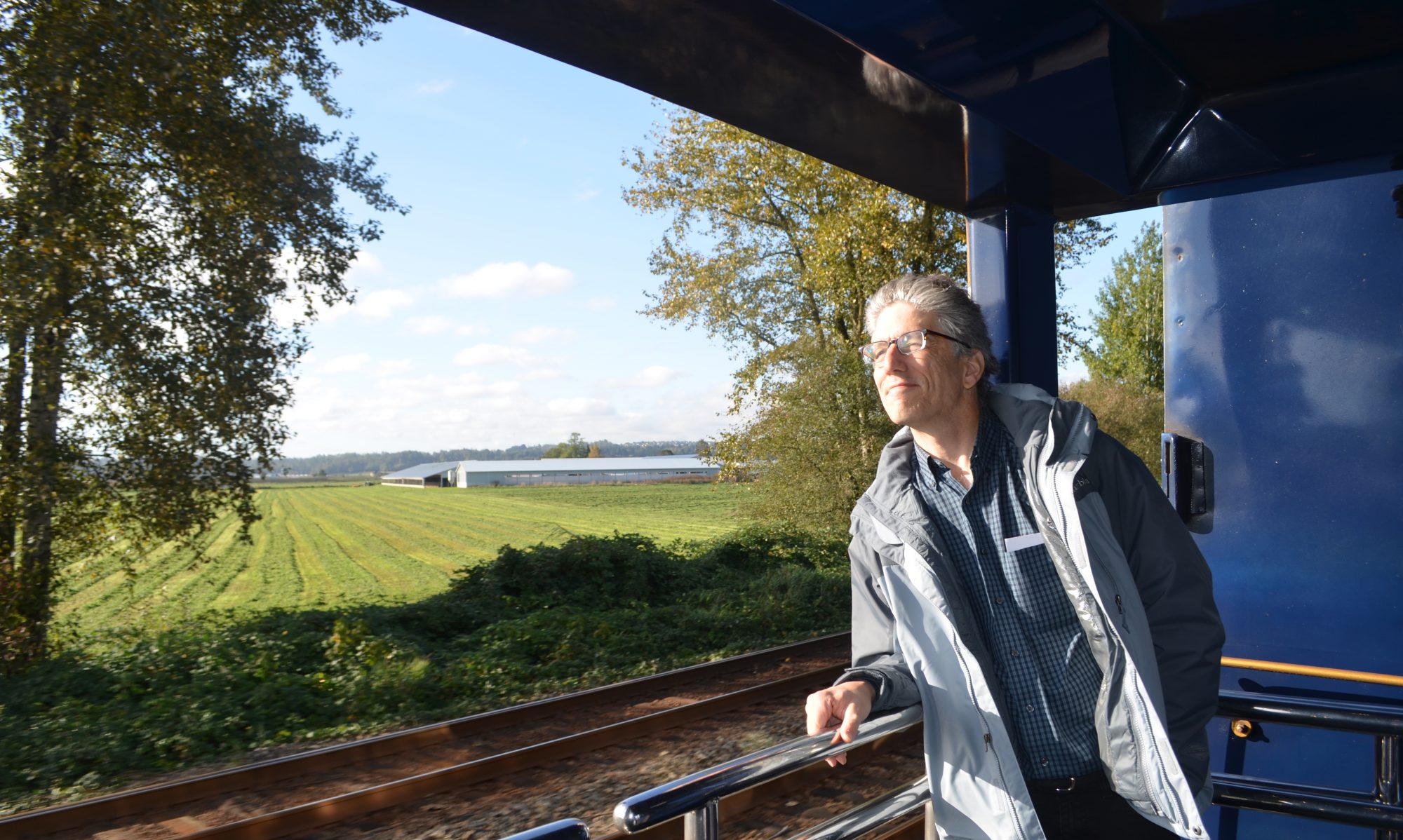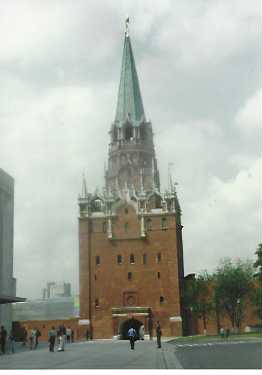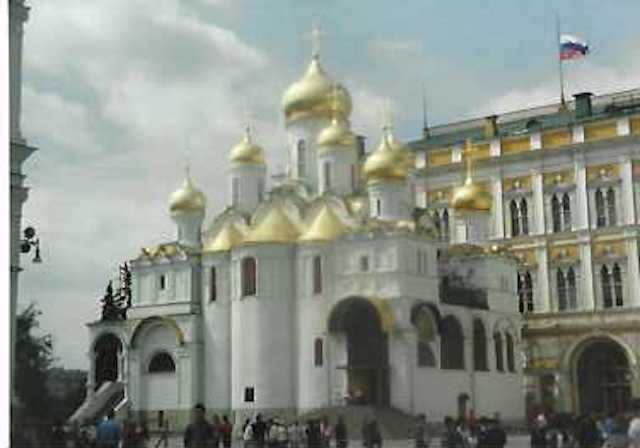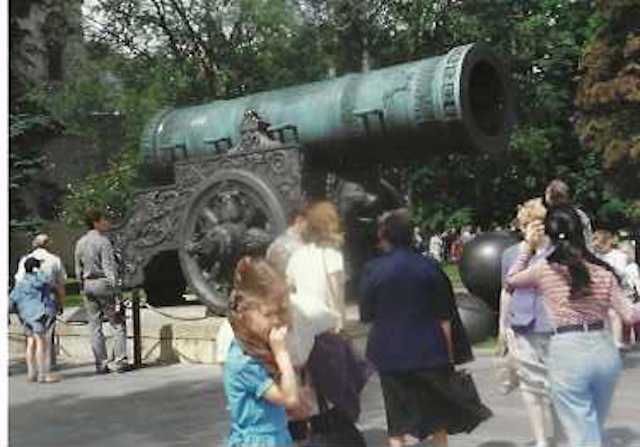The End of the Dead Soviet Leaders Tour and How Not to Win Friends and Influence Mobsters

“If you can only see one thing during your visit, see everything.”
–An old promotional slogan for Seattle’s Space Needle.
It didn’t take long for me to realize that the Dead Communist Leader Tour might come to an abrupt end, if I couldn’t get the group to move a little faster.
Lenin’s Tomb was part of the route of the walking tour the travel agent was taking us on, but we were running out of time. The tomb closed around 1 p.m. and the tour was supposed to end at Red Square around noon, but we’d gotten a late start.
Although our guide Lena, who pronounced her name Leona, showed us the city’s high points — the Kremlin, Bolshoi Ballet, Politburo — the most interesting stops weren’t stops at all. They were stations for Moscow’s underground transit system. The subway itself isn’t so interesting, but the stations are fascinating because the artwork in each is based around a central theme. The first we visited, Moscow Dynamo, is near Dynamo Stadium, and has sports-related sculptures in its many nooks and crannies. The ceiling also sported paintings celebrating Russia’s athletic prowess. Another station focused on the Worker’s Revolution with statues of citizen soldiers, farmers, teachers and families in commemoration of the people’s revolution.

The Kremlin was also eye-opening. I always thought The Kremlin was one building located in Red Square where the Politburo met. Leona quickly disabused us of this notion. Kremlin means “fortress” and is the seat of Russian government, but isn’t one building. Instead it’s a walled-in castle complex with 18 buildings, 20 towers, a square filled with churches and is also home to the world’s largest, heaviest bell and the world’s largest caliber cannon.
She also said the initials for the USSR were not CCCP, as many English speakers had believed over the years. After she told us this members of the tour group all looked at each other silently behind her back with expressions that said “No duh” and “that may be the case but it still looks like a CCCP, and I’m sticking with it” at the same time. It was almost as if we all consciously agreed to make fun of her after the tour was over.
The tour ended 10 minutes before Lenin closed and we were a five-minute run from Red Square. Unfortunately, I didn’t have the energy or the vigor for such a long jog on so little sleep.
And so the Dead Communist Leader Tour ended, leaving me to wonder what I would call this trip. This may sound silly, but I’ve always named trips that have played a major role in my life. When I went on a 1987 cross-country job-hunting tour that ended with me blacking out while driving and hitting a bridge, I called it “The Bridge Tour.” And when I drove cross-country in a car with my girlfriend and she left my luggage on top of the car so that it splattered across Interstate 70 just outside downtown St. Louis, it became “The Luggage All Over America Tour.”
I wasn’t staying up late worrying about the issue. It was just one of the many ways I amuse myself on long trips and calling the trip “The Dead Soviet Leader Tour” seemed funny. Unfortunately, it came to an abrupt end when we got to Red Square and saw the tomb was closed.
Finis. Finito. Finished. Completed. Completo. No more. Out of here. Color it gone. It was history.
Our run walk wasn’t a total loss, however, because we ended up in historic Red Square near Lenin’s apparent final resting place, St. Basil’s Cathedral — once called the Pineapple Church by Victorian travelers because of the brick orthodox church’s many onion-shaped domes striped in festive carnival colors– and the equally-famous GUM department store. So, we did what any good Westerner would: we went shopping.

As with the rest of my visit, I was struck by how it differed from my expectations. Years of cold war rhetoric prepared me for dull, gray buildings, unhappy people standing in long lines as well as grocery stores and shops with little merchandise in them. Instead, we found well-stocked grocery stores, shops filled with consumer goods and plenty of building going on, even on a Saturday.
I don’t know whether this was a result of the fall of Communism, Glasnost, Perestroika or any other Russian word.
I’m sure the lines exist somewhere, even if only in places tourists don’t see. One of the customs agents at the first train station over the Russian border told us he hadn’t been paid in five months. The lines might even be just outside Moscow. I suppose I shouldn’t have expected lines in central Moscow because the city is a major tourist destination and it’s highly unlikely that a non-democratic government would allow visitors to see them. Even the kiosks at most major train stations were well stocked (booze makes up the majority of the stock at most of the kiosks, though), but the fact remains that locals flock to the station the day the Trans-Siberian’s rolling road show and bazaar chugs through town so they buy things off the train they can’t get back home and sell stuff just to make ends meet.
I wasn’t surprised by my brush with organized crime, Russian style, but I was shocked where I ran into it. The Bolshoi Ballet. I had been watchful all day because I had been told that the Russian Mafia made Moscow quite dangerous. Although I typically would have ignored such warnings as the mere blather of hysterical non-travelers, this rumor had reality to back it up. The son of a close family friend was killed there in an apparent random act of violence, my mother told me. So, I was on my best behavior. Until we got to the Bolshoi parking lot.
Once there, we were approached by scalpers with a variety of tickets at a range of prices in a variety of locations. The only things the offers had in common was their outrageously high price and their random locations. Then, a guy wearing a Yankees hat and three-day beard told us he had a block that would allow us to sit together for $15 a person. It didn’t sound like a bad price until I saw that the tickets had a face value of 8,000 rubles ($2). When we balked at the price he said he’d gotten the tickets at the special price of $10 a ticket and wanted to pass the savings on to us, but he also had to make a profit.
I said $10 was a very special price for the people who sold it to him because they made a 500 percent profit and what kind of businessman would pay that much over face value? I then offered him $8 a ticket and he walked off, pissed.
Apparently, he must have been head scalper because he wouldn’t allow any other scalper to approach us even thought it meant being stuck with extra tickets.
Chris talked to him and smoothed things over enough that he was willing to sell them to us for $10 each. Such a sacrifice.
It was the final night of the season and the Bolshoi was presenting a show of mostly short dance numbers. The first act was quite enjoyable even though I had to stand most of the time because someone was in my seat. I didn’t mind, though, because the view standing was better and made it possible for me to stay awake in oppressive mid-summer heat.
I wasn’t impressed with the second act. I had a seat, the view wasn’t good and the number draggged on for 20 years. I’m no expert on interpretive dance, but the final piece appeared to be about AIDS and it seems to have made its point during the first two numbers but still went on for six more numbers, lasting more than a half hour.
The audience gave it two standing ovations when it was done, but I suspect that was just because they were happy it was finally over or grateful for the chance to get up and move. Chris and I didn’t stick around to find out which was correct, however. We had a train to catch, so we sprinted to the station, threw our things in the allotted storage spaces with the ease of seasoned travelers and then marveled at how easily we had gotten used to train travel.



